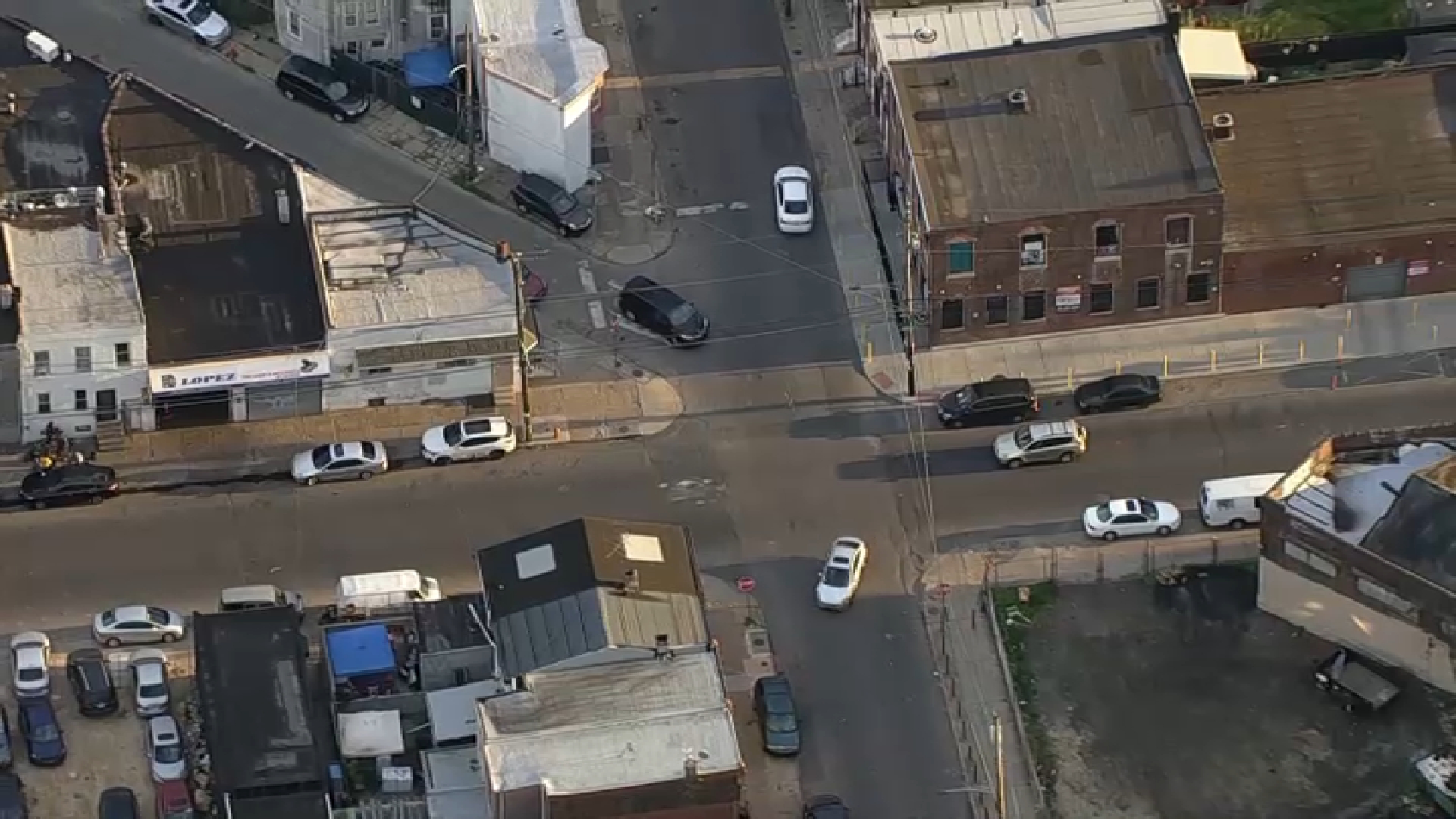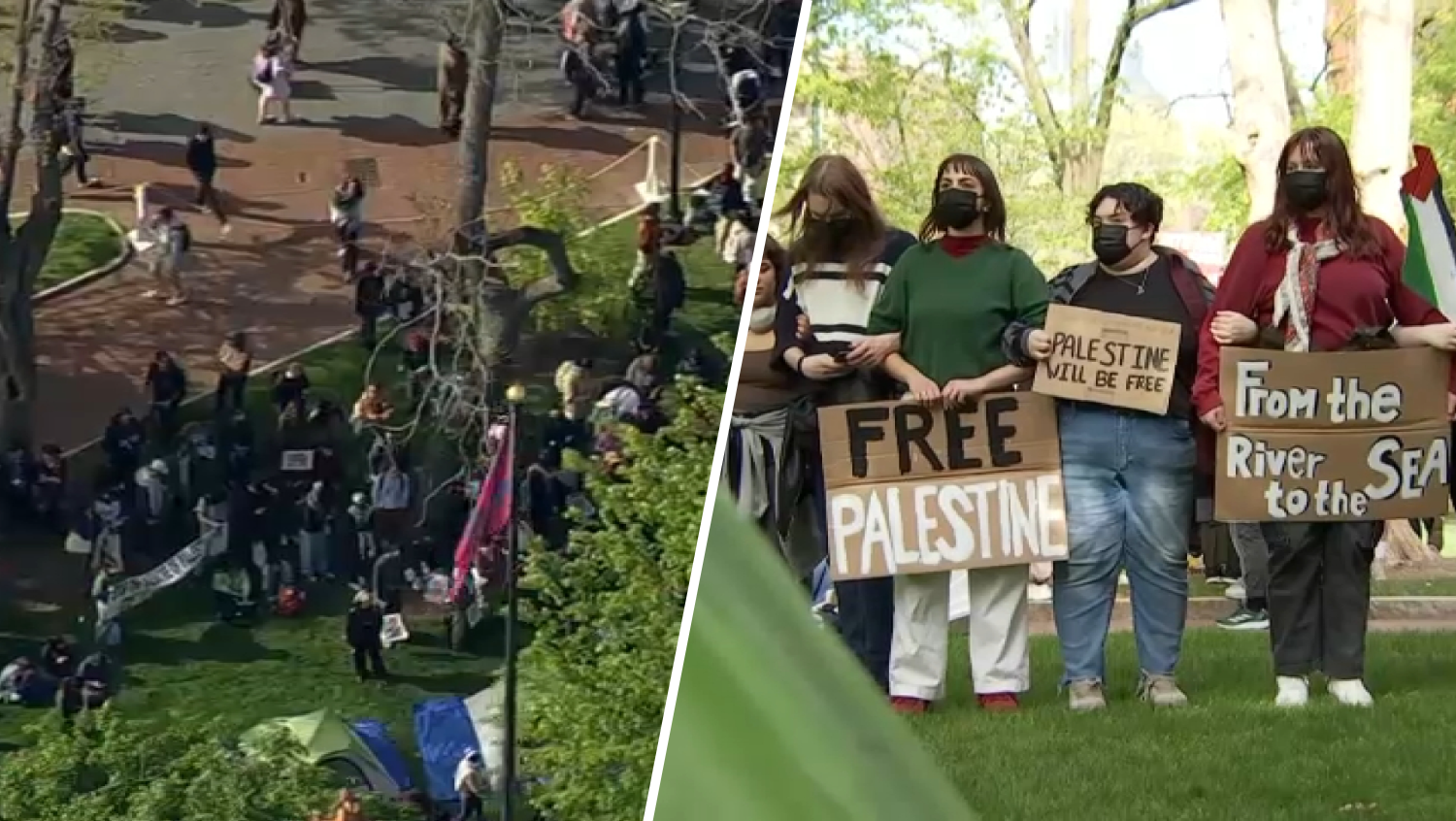What to Know
- Common Pleas Court Judge Paula Patrick ruled that the Christopher Columbus statue can remain at Marconi Plaza in South Philadelphia.
- The ruling overturned the city's decision to remove it last year.
- The statue became a cultural flashpoint last year during protests in reaction to the death of George Floyd and the country's racial reckoning.
A prominent Christopher Columbus statue that was the site of clashes between protesters and counter-protesters last year can remain in South Philadelphia, a judge ruled on Tuesday.
“While we are very disappointed with the ruling, we're reviewing it now and exploring all potential options—including a possible appeal,” a city spokesperson told NBC10. “The statue remains in Marconi Plaza and will continue to be secured in its existing box.”
Get Philly local news, weather forecasts, sports and entertainment stories to your inbox. Sign up for NBC Philadelphia newsletters.
The statue became a cultural flashpoint when a group of mostly men, some armed with bats and at least one with a rifle, surrounded the sculpture on June 13, 2020. The group was responding to unfounded social media rumors that the city planned to take down the statue as people in other cities tore down similar sculptures amid national protests and a racial reckoning in the country following the death of George Floyd.
Some of the men clashed with counter-protesters, and the city later covered the statue with a wooden box.
In July of 2020, the city’s historical commission voted to remove the statue while Mayor Jim Kenney’s administration argued the monument was “unacceptable” and “unsafe” and should be relocated.
Local
Breaking news and the stories that matter to your neighborhood.
In August of 2020, the Philadelphia Art Commission decided to allow city officials to place the statue in storage and report back every six months to the commission about efforts to find the statue another home. The commission recommended that they consulted with members of the community throughout the process. A judge then ruled that removing the statue should be temporarily halted.
Then on September 29, the city’s Board of License and Inspection Review upheld the Philadelphia Historical Commission’s decision to remove the statue.
Judge Patrick’s ruling on Tuesday overturned that September decision however. In a seven-page ruling, Patrick said the decision to remove the statue was not supported by law and was based on insufficient evidence.
"It is baffling to this Court as to how the City of Philadelphia wants to remove the Statue without any legal basis," Patrick wrote. "The City's entire argument and case is devoid of any legal foundation."
Debate about Columbus’ likeness followed widespread protests against racism and police violence after the death of George Floyd, a man who died handcuffed and on the ground after a Minneapolis police officer knelt on his neck for nearly 9 minutes, suffocating him.
The protests led to the toppling of Columbus statues and of Confederate monuments around the country as people sought to destroy vestiges of racism.
Though Columbus remains a point of pride for many Italian-Americans, including some in Philadelphia, he has become a controversial figure as people have pointed to his brutality against indigenous people in the Americas as reason for why he should not be revered.
Philadelphia's commissioners seemed to grapple with that issue, as well, noting that the legacies of other historical figures have also been reexamined and reinterpreted and that Columbus splits opinion even within the Italian community.
“We’re finding out every day that heroes are imperfect, and why should that surprise anybody? Heroes are always imperfect,” commission Chairman Alan Greenberger said.
Commissioner Natalie Nixon said she was mindful of the perceived “erasure” of Italian-American history that removing the monument might represent to some, but said she favored putting it in temporary storage and finding it another home because recent social justice movements have made the statue a subject to “all types of revisionist history about the man Christopher Columbus, not the icon Christopher Columbus.”
“I think there are opportunities to identify other placement of the statue, where it’s not a total erasure, where it’s in a place where people who feel an affinity for what Christopher Columbus meant to them, they can access the art in that new context,” Nixon said.
The staunchest opponents to the statue’s removal were commissioner Joe Laragione and commissioner Raed Nasser, who noted its symbolic significance to Italian-Americans, who themselves faced struggles and discrimination upon first arriving in the United States.
Laragione argued in favor of keeping the monument at Marconi Plaza and having it guarded before its future again came to a vote in front of the commission at a later date, but that proposal was rejected.
Notably, he claimed that the push to remove the statue was part of a “Marxist” movement to erase American history.
“It’s a Marxist movement to destroy as much culture and history in America as can possibly happen,” Laragione said.
The claim that removing statues is part of a Marxist movement is an unfounded accusation increasingly leveled against Black Lives Matter protesters. No other commissioner challenged him on his assertion.
On the other end of the spectrum was commissioner Robert Roesch, himself a sculptor.
“When I see a work of art being spray painted and people standing around it with guns and bats, I find that very upsetting, and that’s not the purpose of public art,” he said. “And to suggest the community could guard the artwork is patently absurd; unrest leads to more unrest,” he added while advocating for the statue’s relocation.
Officials from Kenney’s administration noted in July 2020 that most of the 13,000 people who responded to a survey about what to do with the monument favored its removal.
Commissioner Carmen Febo San Miguel argued that the city’s survey was “very rushed” and that officials should consider a “more well-thought out” survey to gauge public sentiment.



